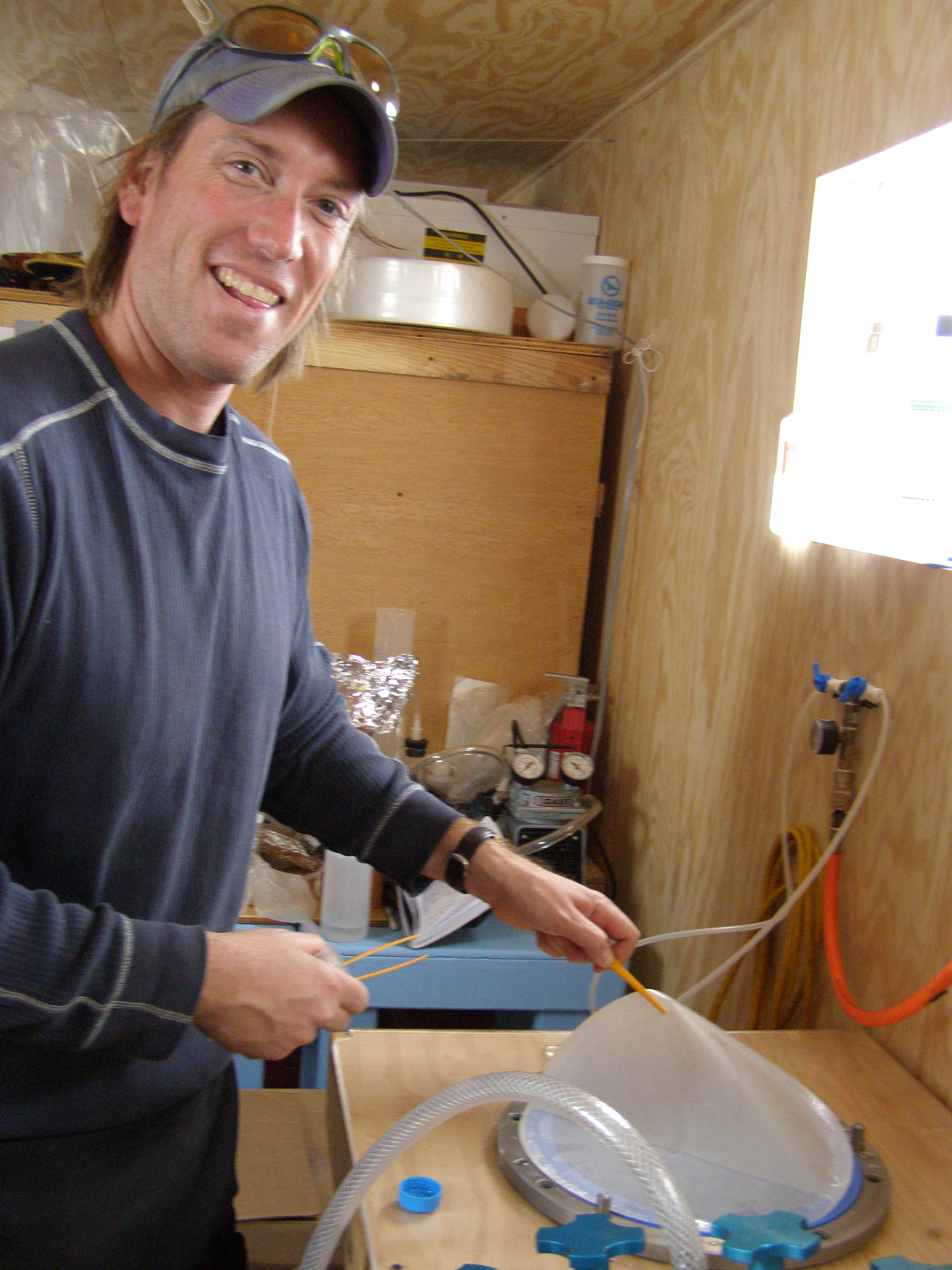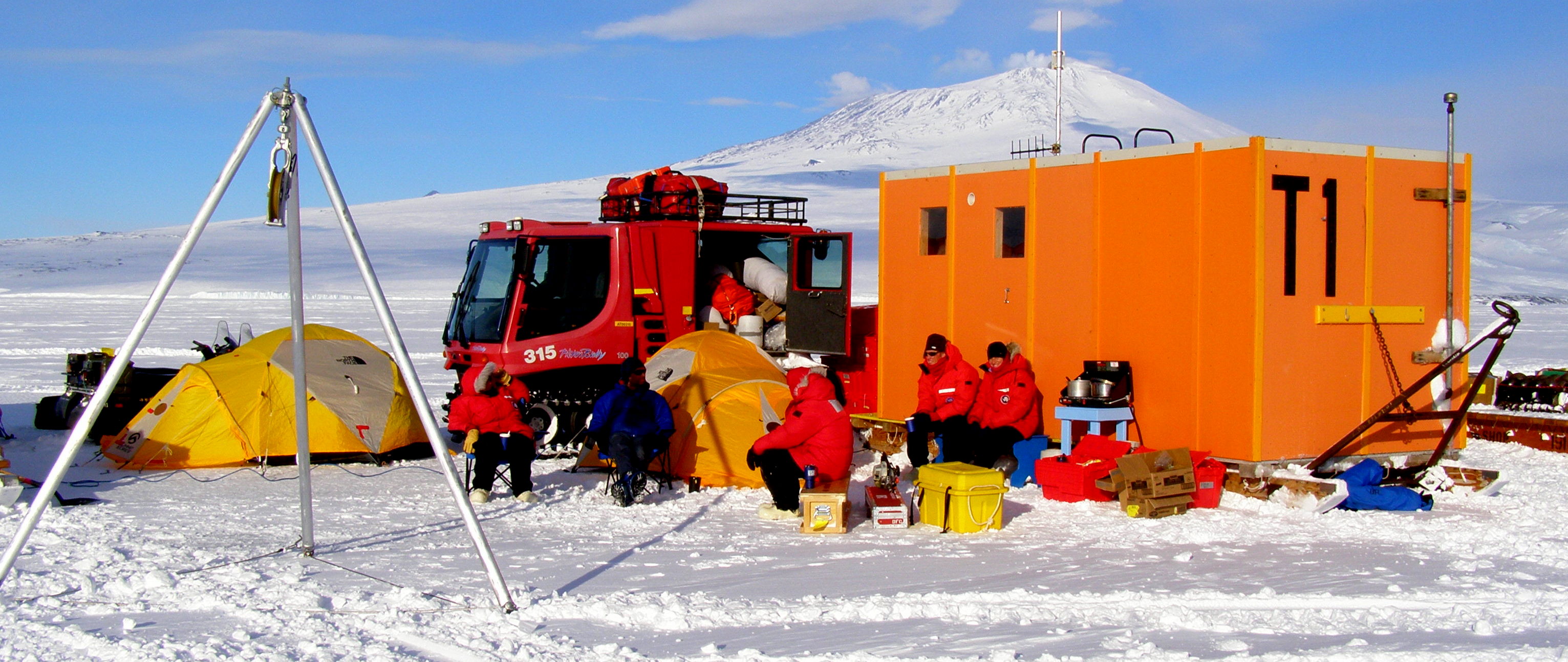Station II, Inaccessible Island
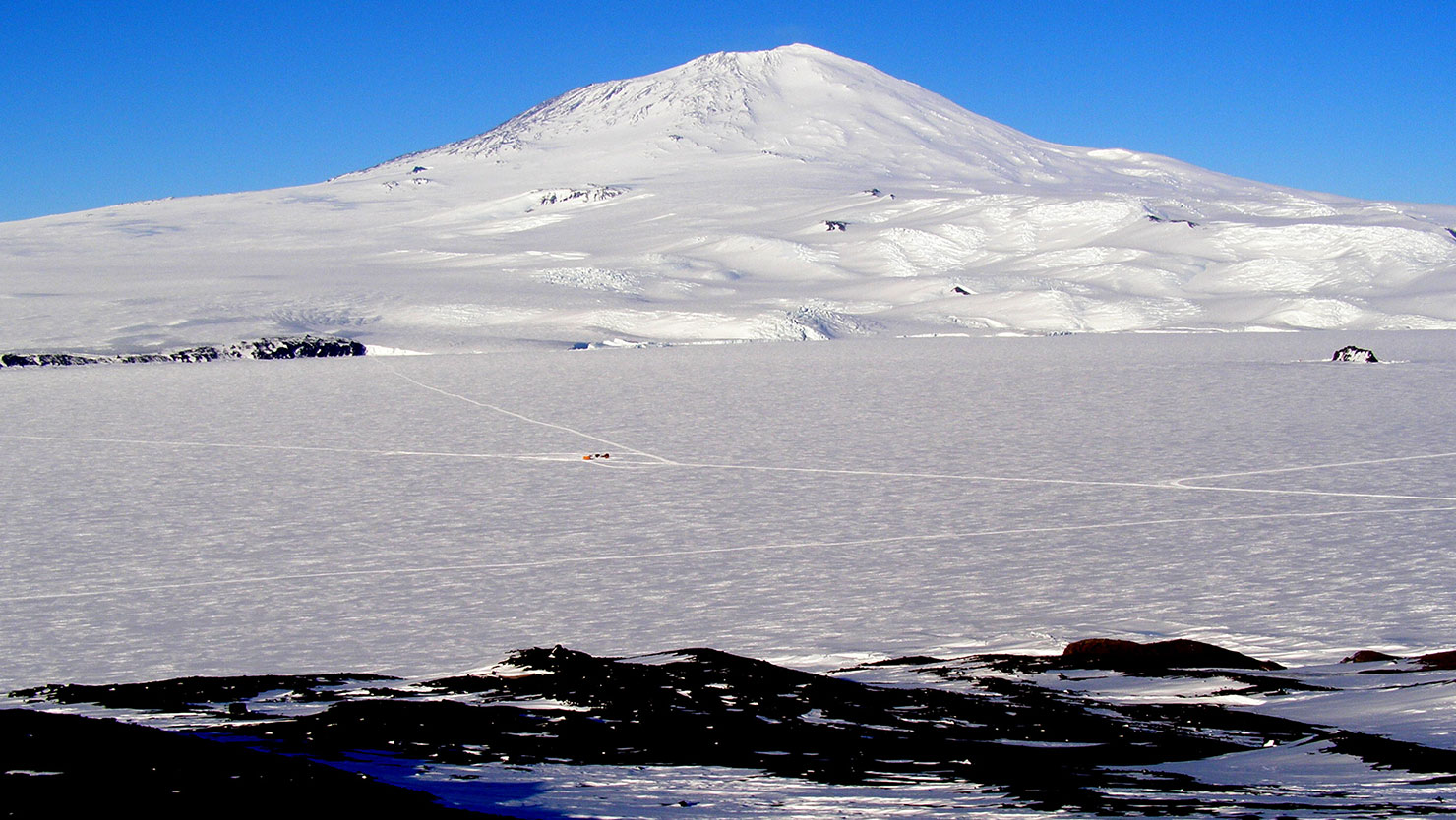
The second storm of our trip hit us while we were packing up Station I for a return to McMurdo. The winds began gusting over 50 miles per hour, and the visibility dropped to near zero. We had already packed up camp, but the orders came in over the radio that Condition 1 had been imposed on the sea ice route, and we were stuck there until conditions improved. Three of us slept on the floor of the research sled while Mak and I slept in the back of the Pisten Bully. The wind shook and buffeted the vehicle all night, and at times the Pisten Bully made this vibrating sound like we were just about to take off.
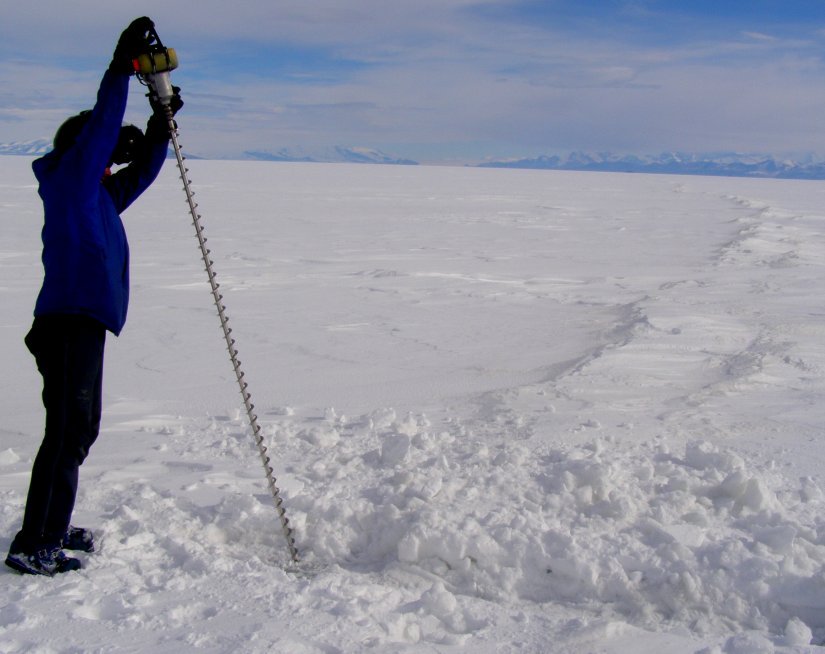
But by 6 PM the following day, the visibility had improved enough for us to follow the flags along the sea-ice highway and return to McMurdo. In town we picked up another crewmember: Matt Smith, the sea-ice specialist for the US Antarctic Program in McMurdo. We then drove back out to our camp at Station I and spent several hours digging our vehicles out of the snowdrifts. By noon the following day everything was ready again for redeployment, and we set out across the ice for our next station, on the north side of Inaccessible Island.
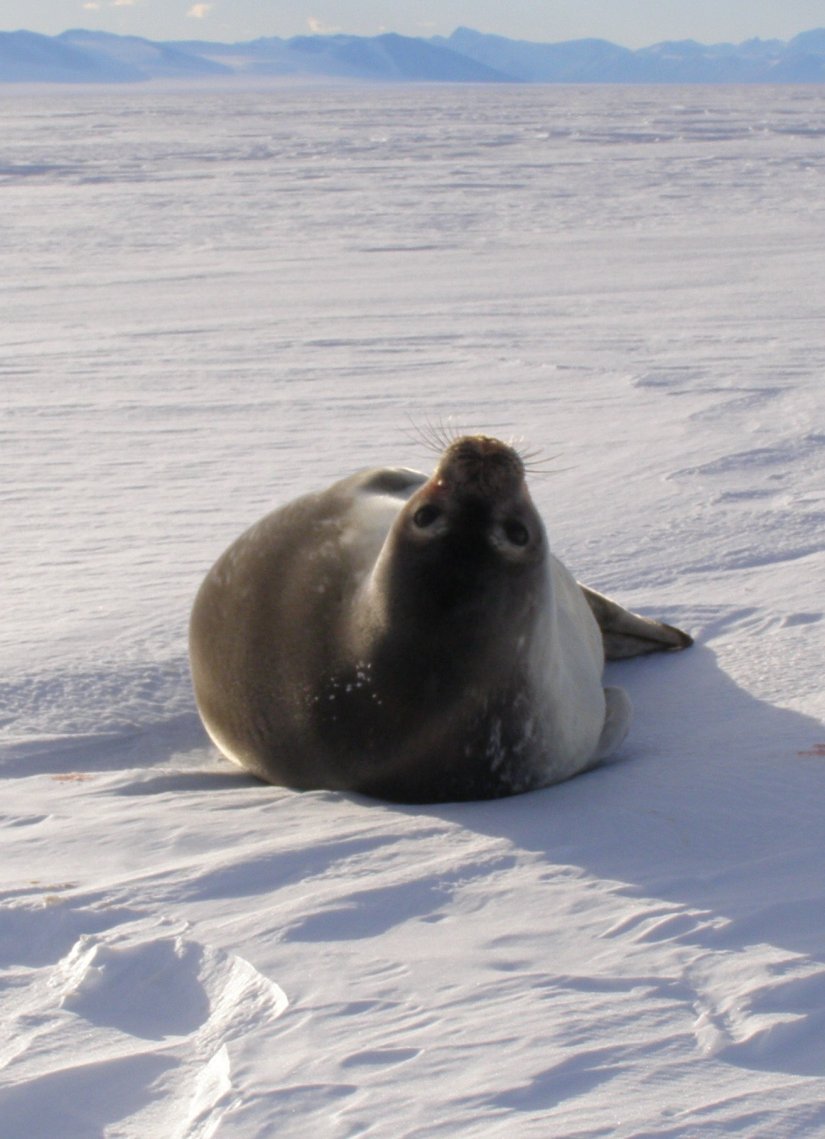
The fresh snow had buried many of the obvious ice cracks and features, so Matt and I went ahead on snowmobiles to scout the route while Jeff Hoffman and Mak Saito followed with the sleds. Cracks like the ridgeline in the above photo were relatively easy to spot, and we drilled them to make sure they were a meter thick, which is more than enough to support the weight of our vehicles. Other cracks though were less apparent, but many times those cracks were given away by the presence of seals loafing on the ice - the pup in this picture barely even moved as we rumbled by, and we saw his breathing hole in a hidden crack just a few feet away. We gave that area wide berth. After a few hours of crack testing and route finding, we made it out into McMurdo Sound proper and to our next station.
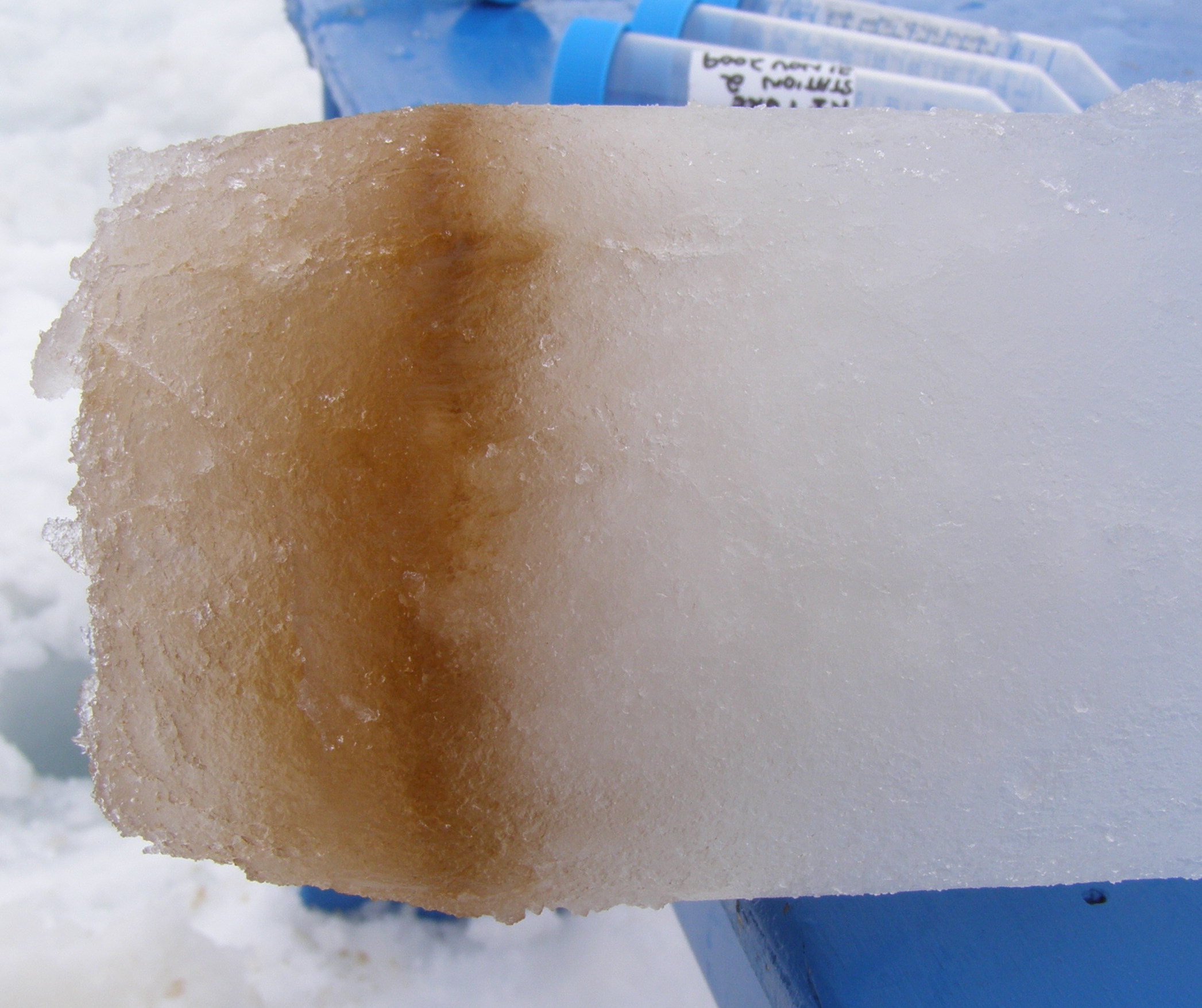
The next morning we fired up our generator and drills. I used the Kovacs core sampler to create a large enough hole so that Jeff and I could get our sampling gear down below the ice. We have been wrapping all of our sample tubing in black insulation, as the seawater will rapidly freeze on contact with icy air. This is espeically true in Antarctica, where the wind seems to blow nearly continuously, freezing engines, air hoses, compressors, you name it! I also drilled a number of ice cores so we could obtain some genetic material from the organisms living on the bottom of the ice. Drilling those cores takes a few hours- while I was doing that Jeff Hoffman worked the stainless steel filter sets and the viral concentrator. In the picture on the left you can see one of the filters for the larger phytoplankton. That particular filter captures anything in the water which is between 3 and 200 microns, which is the size of most of the diatoms and other large phytoplankton. If you have a sharp eye, or a good computer monitor, you can see a slight discoloration of the filter as compared to the edge - that discoloration is from planktonic cells which have become trapped on the filter. To obtain that amount of cells, we had to filter over 400 liters of seawater, and even then, it almost seems less that the amount that was in the ice core. This is possibly due to seasonality in the sea-ice cycle: it is still late spring here, and as summer progresses and the sea ice starts to melt, the diatoms trapped in the sea ice will be released into the water, becoming the seeds for the annual summer phytoplankton bloom in the Ross Sea. Jeff Hoffman and Andy Allen brought back samples last year from the late summer, so between the spring and summer samples we should be able to develop a wider genomic understanding of polar marine phytoplankton.
